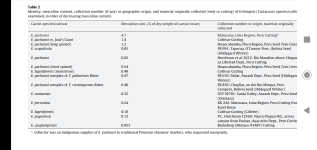permatrip
Rising Star
I have TLC plates from bunk Police and Marquis reagent. I need to get another reagent though since I want test cactus and try growing and breeding Illinois bundleflower for increased alkaloids. Probably best to do 2 reagent test even better 3 reagent tests as outlined in one of the booklets that came with the kit.
I got enough cactus powder I made by removing spines, cutting off strips removing the core. I intend on using my soxhlet and extract with either ethanol or methanol , I got both. Yea I bought 10 pounds I now know I can get much better cactus for the money.
I have chromatography paper from a lab supply company. I was hoping to be able to use it since it cost much less. I might find I can't use it though. I can afford to buy 10-20 tlc plates a month but I know others might not be able to, and that's why I asked about using paper. I will experiment with the paper when I do the tlc plates and see if any thing useful comes from trying paper, spraying with the ninhydrin solution.
I feel pretty confident that I will obtain better stock after reading many threads and the very useful info I found in this thread. I think of screening cactus and growing them as an investment in the future that will benefit more than just me. I feel like I'm involved in something much larger than myself. I got about 20 trichs I started from seed and will start another 20 soon. I know that 10 years from now I will be glad I started this project. Thanks to all of you for the ground work you have done that makes this possible for people like me. I am still learning so any advise is welcomed.
I got enough cactus powder I made by removing spines, cutting off strips removing the core. I intend on using my soxhlet and extract with either ethanol or methanol , I got both. Yea I bought 10 pounds I now know I can get much better cactus for the money.
I have chromatography paper from a lab supply company. I was hoping to be able to use it since it cost much less. I might find I can't use it though. I can afford to buy 10-20 tlc plates a month but I know others might not be able to, and that's why I asked about using paper. I will experiment with the paper when I do the tlc plates and see if any thing useful comes from trying paper, spraying with the ninhydrin solution.
I feel pretty confident that I will obtain better stock after reading many threads and the very useful info I found in this thread. I think of screening cactus and growing them as an investment in the future that will benefit more than just me. I feel like I'm involved in something much larger than myself. I got about 20 trichs I started from seed and will start another 20 soon. I know that 10 years from now I will be glad I started this project. Thanks to all of you for the ground work you have done that makes this possible for people like me. I am still learning so any advise is welcomed.

 Makes sense, they probably tended for and selected plants for hundreds of years.
Makes sense, they probably tended for and selected plants for hundreds of years.

